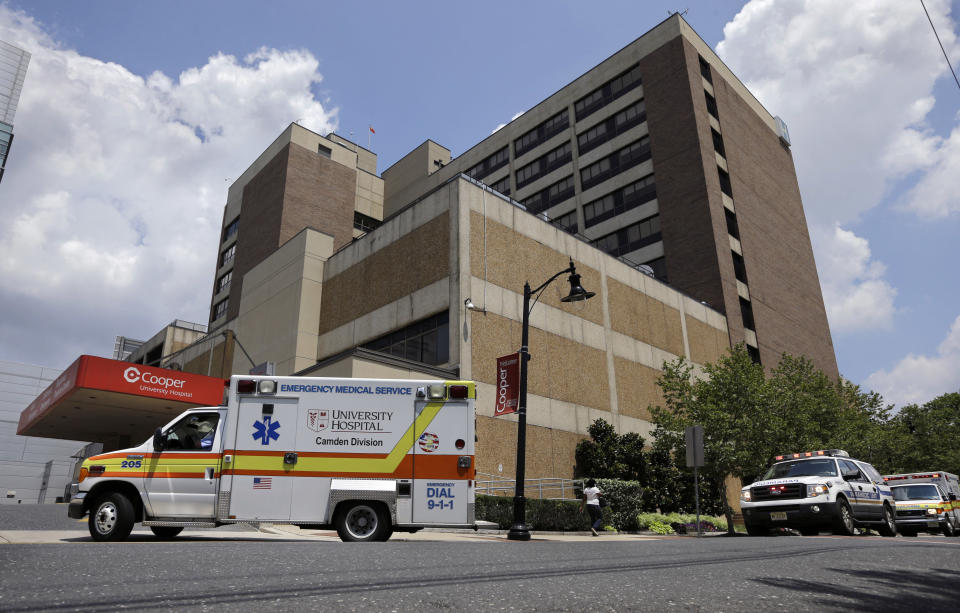Study: 'Hotspotting' social factors not that effective in taming health costs

Can health care costs be contained, and quality improved, by addressing social factors that drive high-need patients to seek increased medical care? A new study suggests the theory itself may be flawed.
On Thursday, the New England Journal of Medicine published a report which appeared to undermine the rationale behind “hotspotting” — a method of care that focuses on patients with high rates of health care utilization. It aims to provide them with added outpatient services to keep them healthy and curb spending.
Originally devised by the Camden Coalition, an organization founded by Dr. Jeffrey Brenner, hotspotting involved identifying “hot spots” of needy patients, then worked on creating an accountability strategy with the help of medical professionals to keep track of them.
However, the NEJM study found that hotspotting didn’t actually reduce readmissions in a significant way. The method has been comparatively more successful when applied to Medicare users — but not as much with the under-insured or uninsured, the study’s authors found.
Specifically, the NEJM report looked at Brenner’s work in identifying “superutilizers” of the health care system— defined as the 5% of the population which accounts for 50% of health care outlays —and preventing frequent readmissions into the costly emergency room environment.
Using a “randomized, controlled trial involving patients with very high use of health care services, readmission rates were not lower among patients randomly assigned to the Coalition’s program than among those who received usual care,” wrote the authors., Amy Finkelstein, Annetta Zhou, Sarah Taubman, Joseph Doyle.
‘Break down silos’
Camden’s Brenner now works for United Healthcare (UNH), where he is focused on some of the same issues, and scaling it to a national level.
Brenner told Yahoo Finance the study’s findings were disappointing, but defended the original hypothesis. He insisted that “health care is disorganized and people are overwhelmed and confused” and there is a need to “break down the silos” of the health system.
Back when it was first introduced in 2011, hotspotting earned widespread support, and sparked a national health care conversation. It was even adopted by the Association of American Medical Colleges for the next generation of health professionals — and was written about favorably by Atul Gawande, who now heads Haven, the joint venture of Amazon (AMZN), Berkshire Hathaway (BRK) and JPMorgan Chase (JPM).
However, it did have some early critics. Larry Van Horn, the executive director of health affairs at Vanderbilt University who influenced hand President Donald Trump’s executive order on price transparency, questioned the idea of the health industry addressing social factors.
In response to Gawande’s 2011 report, Van Horn blasted the “terrible economics” underpinning the hot spot theory, saying ti would involve “a massive expansion of a health care system that we already cannot afford.”
“People forget how much attention this got” when it first came out, said Craig Garthwaite, a health economist and director of health care at Northwestern University’s Kellogg School of Management.
He said the NEJM study is important, because even though the idea of hotspotting has gone through an evolution since it was first developed, it can set an example of how much more is needed in proving the social factors thesis.
“People have this desire for this simple easy solution to the problems that we face,” Garthwaite said. Addressing questions of scale are important, he added.
“It might be that this kind of program does work, and if it does, take that specific set of people who you think it will work for” in order to build out from there, Garthwaite said.
Don’t write it off yet
Brenner’s work on social factors formed the foundation for a new approach to health care, and informs his work at United Healthcare — where the insurer is taking on 100% of costs to find the highest utilizers and address their housing needs.
“It’s not a strategy for the whole country,” Brenner admitted to Yahoo Finance, noting that the current program at United focuses on those who cost at least $50,000 annually to the insurer.
“There are a lot more people below that, so at some point I would like to see blended and braided funding to take housing and...make it part of the benefit design,” he said.
However, other experts say the new study is not a nail in the coffin of social determinants, but rather a reminder that there is still a lot of work to be done. Shereef Elnahal, a former New Jersey Department of Health commissioner and current CEO of a safety net hospital in Newark, said the debate is still meaningful.
“It’s important to understand that this is a study that looked at a particular intervention” and not the overall idea of social factors, he said, adding that some of his work has been determined by hotspotting.
“To write off the focus on social determinants would be like AIDS researchers giving up after the initial drug failed because people developed a resistance to it,” he said.
Even the New England study acknowledged that the hotspotting model has evolved since it was implemented, and may yet prove effective.
It’s a challenge that other medical fields have faced at one point or another, Brenner pointed out.
“Cancer treatment took 50 years to figure out, and we’re just beginning” to see results, he said.

 Yahoo Finance
Yahoo Finance 